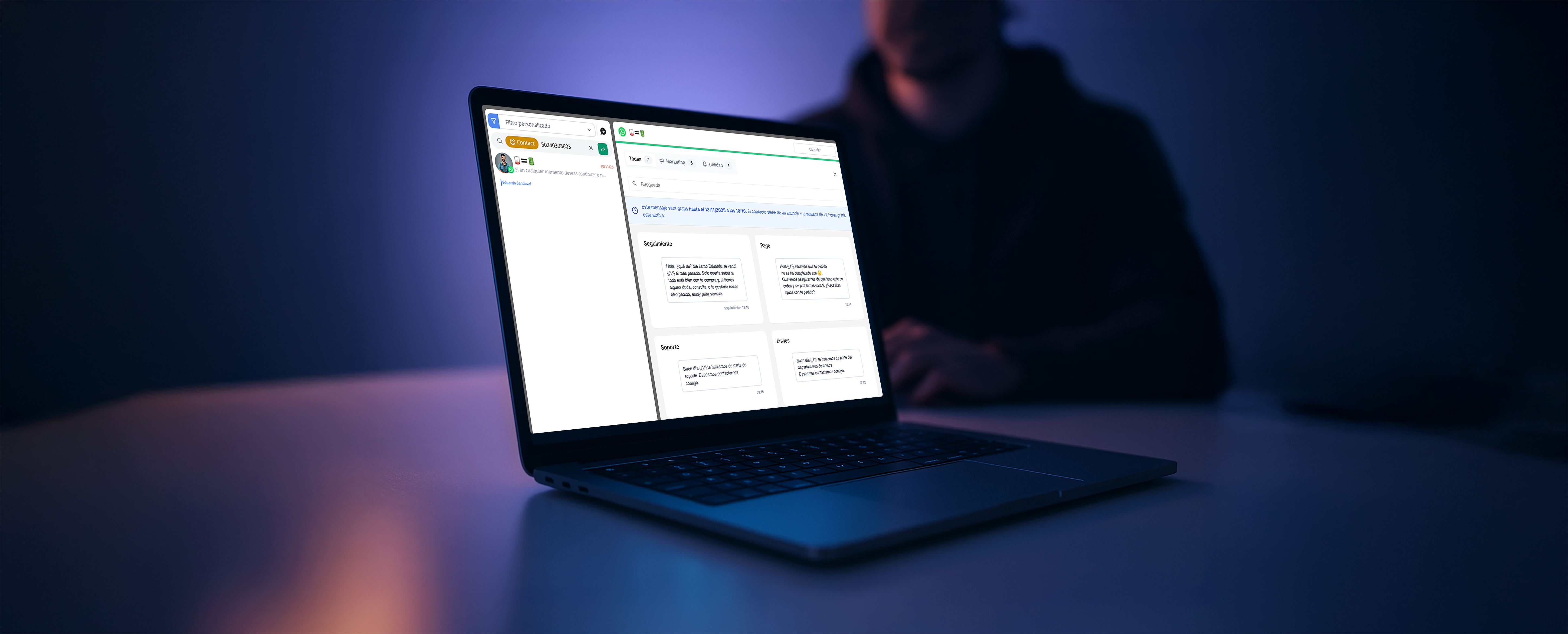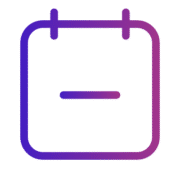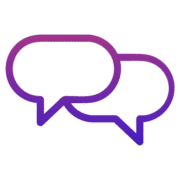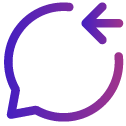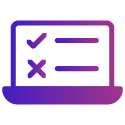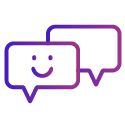Mastering WhatsApp Conversions in Meta Advertising
Last Tuesday, a marketing manager I know spent $3,200 on a Meta ads campaign. Her dashboard showed 127 “conversions.” She was thrilled.
When she checked her WhatsApp, there were 84 actual messages. And only 52 unique people.
She asked me: “What am I doing wrong?”
The answer surprised her: Nothing. And everything.
Understanding how Meta counts WhatsApp conversions is like learning a new language. The words look familiar, but they mean something different than you expect. And that difference? It’s the gap between thinking your campaign works and knowing it actually does.
I’ve been working in conversational commerce for years now. What I’ve learned is this: The technology is relatively easy. The strategy is hard. And the details everyone ignores are the ones that matter most.
Let me show you what’s really happening behind those conversion numbers.
Why This Matters Now
Something fundamental has shifted in how people buy things online.
A decade ago, we trained customers to fill out forms. We built landing pages with five-step checkout flows. We A/B tested button colors and headline copy, trying to squeeze out another half percentage point of conversion rate.
That world is disappearing.
Today, people want to talk. They want to ask questions before they buy. They want to know a real person is there, ready to help them figure out if this product is right for them.
WhatsApp—with 2 billion users worldwide—is where those conversations happen.
Meta knows this. That’s why they’ve made it ridiculously easy to drive traffic from Facebook and Instagram ads directly into WhatsApp chats. Click an ad, start a conversation. Simple.
But “simple” and “easy to do well” are not the same thing.
The Counting Game: What Meta Calls a Conversion
Here’s the first thing you need to understand: In Meta’s world, a WhatsApp “conversion” is not a sale. It’s not even a qualified lead. It’s a conversation started.
The metric is called “Messaging Conversations Started,” and it counts each time a unique user initiates a WhatsApp chat with your business after clicking your ad.
Seems straightforward. It’s not.
The Seven-Day Rule
If someone clicks your ad Monday and messages you, that’s one conversation.
If the same person messages you again Tuesday, Meta doesn’t count it as a new conversion. Or Wednesday. Or Thursday. Not unless seven days have passed since their last message.
Meta treats all interactions within a seven-day window as part of the same ongoing conversation. One conversion, multiple messages.
This is actually smart—it prevents inflated numbers from the same person repeatedly messaging you. But it also means your conversion count will be lower than your total message volume. That’s not a problem. That’s how it’s supposed to work.
The Click That Wasn’t a Message
Now here’s where things get messy.
In many campaign setups—especially when using the basic WhatsApp Business App—Meta counts a conversion when someone clicks to open WhatsApp. Not when they actually send a message.
Think about that for a second.
Someone sees your ad. They click it. WhatsApp opens on their phone. They see the pre-filled message. And then… they close it. They change their mind. They get distracted. They never actually message you.
Meta’s dashboard shows a conversion. Your WhatsApp shows nothing.
This isn’t fraud. It’s a technical limitation of how the tracking works. WhatsApp can’t tell Meta “this person sent a message” until after they do it. But Meta can see “this person clicked and opened WhatsApp.” So that’s what gets counted.
The gap between clicks and actual messages can be 20–30% or higher. You need to know this number for your campaigns. It’s the difference between thinking you’re getting 100 leads and realizing you’re getting 70.
When One Lead Becomes Two Conversions (Or More)
Here’s the third counting quirk: Multiple ad clicks from the same person can generate multiple conversions.
If someone clicks Ad A on Monday and starts a chat, that’s one conversion attributed to Ad A.
If the same person clicks Ad B on Wednesday and starts another chat, that’s a second conversion attributed to Ad B.
Meta’s conversion tracking is tied to individual ads, not to unique users across your entire account. This makes sense from Meta’s perspective—they want to show you which specific ads are performing. But it means your “total conversions” might be higher than your actual “unique contacts.”
Again, not a bug. A feature. But one you need to understand to interpret your data correctly.
“The numbers never lie, but they don’t always tell you what you think they’re telling you.”
What Your Dashboard Is Really Saying
When you look at your Meta Ads Manager, you see numbers. What you need to see are stories.
Messaging Conversations Started tells you how many people were interested enough to reach out. It’s your top-of-funnel metric. High is good, but only if what comes next is also good.
Cost Per Messaging Conversation Started tells you what you’re paying for that initial interest. But a cheap conversation that never converts is worthless. An expensive conversation that consistently closes deals is gold. Context matters.
Click-to-Message Rate tells you how compelling your ad creative is. If lots of people see your ad but few click to message, your offer isn’t resonating. If lots of people click but don’t convert, your offer might be attracting the wrong people.
The real insight comes from connecting these numbers to what happens after the conversation starts.
How many conversations qualify as real leads? How many leads become customers? What’s the average order value? What’s the lifetime value?
Without tracking this full funnel, you’re measuring activity, not results.
The Conversation Funnel: How WhatsApp Fits
Traditional e-commerce funnels are linear:
WhatsApp funnels are compressed:
Everything that used to happen across multiple pages now happens in dialogue. Questions get answered in real-time. Objections get handled immediately. Trust gets built through conversation, not through copy on a page.
This compression is powerful because it removes friction. But it also concentrates pressure.
Your ad creative has to set expectations perfectly. Your first response has to engage immediately. Your conversation flow has to move people toward a decision without feeling pushy.
Get any of these wrong, and the whole thing falls apart.
Get them right, and you’ll wonder why you ever built landing pages in the first place.
The 72 Hour Secret
Let me tell you about the most underused feature in WhatsApp advertising.
When someone messages your business through a Meta ad, you get a 72-hour window where you can send follow-up messages for free.
Not “discounted.” Not “reduced rate.” Free.
Think about what this means.
Someone reaches out Monday at 3 PM. They’re interested but not ready to buy yet. You can follow up Tuesday morning with additional information—no cost. You can check in Wednesday afternoon with a special offer—no cost. You have three full days to nurture this lead without worrying about message fees.
After 72 hours, the rules change. You’ll need to pay for message templates (unless the customer messages you first). But for those first three days? It’s open season for engagement.
I’ve seen businesses ignore this completely. They think: “If someone’s interested, they’ll buy now or never.”
Wrong.
People need time to think. They need to discuss with a partner. They need to check their budget. They need to sleep on it.
The 72-hour window gives you permission to stay in the conversation without being annoying. Use it.
The Five Fatal Mistakes
I’ve analyzed hundreds of WhatsApp campaigns. The successful ones have various strategies. But the failed ones? They all make the same mistakes.
Mistake #1: Responding Tomorrow to Someone Who Cared Today
Speed kills. Or rather, the lack of speed kills.
When someone clicks your ad and messages you, they’re in buying mode right now. They’re on their phone. They’re engaged. They’re ready to hear what you have to say.
If your first response comes three hours later, that moment is gone. They’ve moved on. They’ve found a competitor who answered faster. They’ve forgotten they even messaged you.
The data on this is brutal: Conversations that get a sub-5-minute response convert at 3–4x the rate of conversations that get a 1-hour response. Every minute you wait is money you’re losing.
If you can’t commit to fast responses, don’t run WhatsApp ads. It’s that simple.
Mistake #2: The Bait and Switch
Your ad says: “Get 30% off your first order.”
The user clicks, expecting to discuss the discount.
Your first message says: “Hi! Thanks for reaching out. How can I help you today?”
Now the user has to re-explain what they want, remind you about the discount they saw, and justify why they deserve it.
Friction at every step. Confusion everywhere.
Your ad promise and your WhatsApp greeting must be perfectly aligned. If your ad mentions a specific offer, your first message should acknowledge it immediately. “Thanks for your interest in our 30% off offer! Let me get that set up for you…”
This sounds obvious. But I see misalignment in about 40% of the campaigns I review.
Mistake #3: Hope Is Not a Testing Strategy
You build your campaign. You set up your WhatsApp number. You write your welcome message. You launch.
And then, three days and $500 later, you discover the phone number in your ad settings was wrong. Or your WhatsApp Business Account wasn’t properly connected. Or your automated welcome message never loaded.
Always test your own funnel before you spend a dollar.
Click your ad (Meta lets you preview it). Send yourself a message. Experience what your customers will experience. If anything is broken, fix it now, not after you’ve wasted budget.
I cannot tell you how many times I’ve helped someone troubleshoot a “campaign problem” that was actually a “typo in the phone number” problem.
Test. Then test again. Then launch.
Mistake #4: Confusing Persistence with Harassment
A user messages you. You respond helpfully. They say, “This looks interesting. Let me think about it.”
And then you send ten follow-up messages over the next 48 hours.
- “Just checking in!”
- “Still interested?”
- “Today’s your last chance!”
- “Don’t miss out!”
This is not persistence. This is spam. And it leads to blocks, reports, and potentially getting your number flagged by WhatsApp.
One or two follow-ups within your 72-hour window? Perfectly fine. Beyond that, you’re crossing a line.
Give people space to make their decision. Respect their boundaries. If they’re interested, they’ll come back. If they’re not, no amount of pestering will change their mind.
Mistake #5: Talking Like a Corporation to Someone’s Personal Phone
WhatsApp is where people talk to their friends. Their family. Their partner.
It’s not where they expect corporate press release language.
When you message someone on WhatsApp, you’re entering their personal space. The tone needs to match. Friendly, not formal. Helpful, not salesy. Human, not robotic.
Your automated messages should read like a real person wrote them. Your agents should type like they’re texting a friend. Emojis are okay. Casual language is okay. What’s not okay is treating WhatsApp like it’s email.
“The medium shapes the message. WhatsApp isn’t email. Stop writing like it is.”
What Actually Works: The Playbook
Enough about what not to do. Let’s talk about what does work.
Start with Absolute Clarity
Your ad should tell people exactly what happens when they click.
“Message us for a free quote” is clear.
“Learn more” is vague.
The more specific your call-to-action, the more qualified your leads will be. Yes, you might get fewer clicks. But the clicks you get will be from people who actually want what you’re offering.
Speed + Value = Conversion
Respond fast, but respond with substance.
A quick “Thanks for reaching out!” is better than nothing. But not by much.
A fast, valuable response is what converts: “Thanks for your interest in [product from ad]! To get you exactly what you need, I just have three quick questions…”
This shows you’re paying attention, you remember why they reached out, and you’re ready to help immediately.
Make the First Message Count
Your opening message has three jobs:
- Acknowledge what brought them to you
- Provide immediate value
- Set up the next step in the conversation
“Hi! I saw you’re interested in [specific thing from ad]. Great choice! To make sure I can help you get exactly what you need, can you tell me [qualifying question]?”
This pattern works because it’s personal, relevant, and action-oriented. The user feels heard. They know what to do next. The conversation has momentum.
Track What Happens After the Click
Meta tells you about conversations started. That’s useful. But it’s not enough.
You need to track:
- Conversation-to-qualified-lead rate
- Lead-to-sale conversion rate
- Average order value by source
- Time from first message to close
Use a Conversational Commerce Platform. Use a CRM. Use a spreadsheet. Use a napkin if you have to. But track these numbers. They’re the difference between knowing your campaigns work and hoping they work.
Build for the Long Game
Every person who messages you is potentially valuable beyond this immediate sale.
Capture their information (with permission). Note their interests. Follow up appropriately over time.
The best WhatsApp marketers don’t just close transactions. They build databases of contacts they can nurture for months or years.
This isn’t about spam. It’s about staying relevant to people who’ve already shown interest in what you offer.
The Technical Fork: App vs. API
If you’re running small-scale tests, the free WhatsApp Business App is fine. You can connect up to five devices, handle multiple conversations, use basic automation.
But there are limits. No proper team inbox. No integration with your existing tools. No sophisticated conversation routing.
If you’re serious about scale, you need the WhatsApp Business API.
The API enables:
- Full Platform integration
- Team collaboration features
- Advanced automation and chatbots
- Proper conversation assignment
- Analytics and reporting
It costs money—charged per conversation—but it scales.
The good news? Meta now allows “coexistence.” You can use both the app and the API with the same phone number. This lets you scale gradually without having to switch completely overnight.
Start with the app. Learn what works. Then migrate to the API when you’re ready to scale.
The Bigger Picture
I started working in conversational commerce because I believed something simple: People prefer conversations to forms.
Everything in our data confirms this.
- When given a choice between filling out a lead form and sending a message, people choose the message. Every time.
- When given a choice between navigating a website and asking questions via chat, people choose the chat.
- When given a choice between waiting for an email response and getting an immediate answer on WhatsApp, people choose WhatsApp.
This isn’t about technology being fancy. It’s about technology finally catching up to how humans naturally want to interact.
We’re social creatures. We trust people we talk to. We buy from people who answer our questions. We return to businesses that remember us and our preferences.
WhatsApp ads give you the technology to do all of this at scale. But technology alone doesn’t create results.
What creates results is understanding how the system works, what the numbers really mean, and how to turn conversations into relationships.
Your Next Steps
If you’re running WhatsApp ads (or thinking about it), here’s what to do:
This week:
- Test your own funnel. Click your ads. Send yourself messages. Fix what’s broken.
- Check your response times. How fast are you actually replying? Be honest.
- Look at your dashboard numbers versus your actual WhatsApp messages. What’s the gap?
This month:
- Set up proper tracking beyond Meta’s numbers. Know your full funnel metrics.
- Document your conversation flows. What questions do people commonly ask? What objections come up? Create templates for the common paths.
- Train your team (or yourself) on the best practices. Fast, valuable, human responses.
This quarter:
- Build your follow-up system. Use that 72-hour window systematically.
- Capture lead data properly. Build your database of contacts.
- Test and iterate. Try different ad creatives. Different first messages. Different qualifying questions.
The marketers who figure out conversational commerce now will have a massive advantage in the next few years.
The ones who keep trying to force old playbooks onto new channels will struggle.
A Final Thought
I’ve spent the last hour taking you deep into the technical details of how Meta counts WhatsApp conversions. The 7-day rule. The click-versus-message problem. The 72-hour window. The dashboard metrics.
All of this matters. Understanding the mechanics makes you better at the game.
But here’s what matters more: Every conversation is an opportunity to help someone solve a problem.
When you click an ad and message a business on WhatsApp, you’re not trying to inflate their conversion numbers. You’re trying to figure out if they can help you with something you need.
The businesses that remember this—that treat every conversation as a chance to serve someone, not just to make a sale—those are the businesses that win in conversational commerce.
The technology is here. The platform is mature. The opportunity is massive. Go take advantage of it!
About the Data Used in this Post
This piece synthesizes insights from Meta’s advertising documentation, WhatsApp Business platform specifications, and real-world campaign data from businesses using conversational commerce. While the specific technical details may evolve as Meta updates its platforms, the core principles—understand how tracking works, respond fast, provide value, build relationships—remain constant.
For the most current technical specifications, consult Meta’s Business Help Center and the WhatsApp Business Platform documentation.
